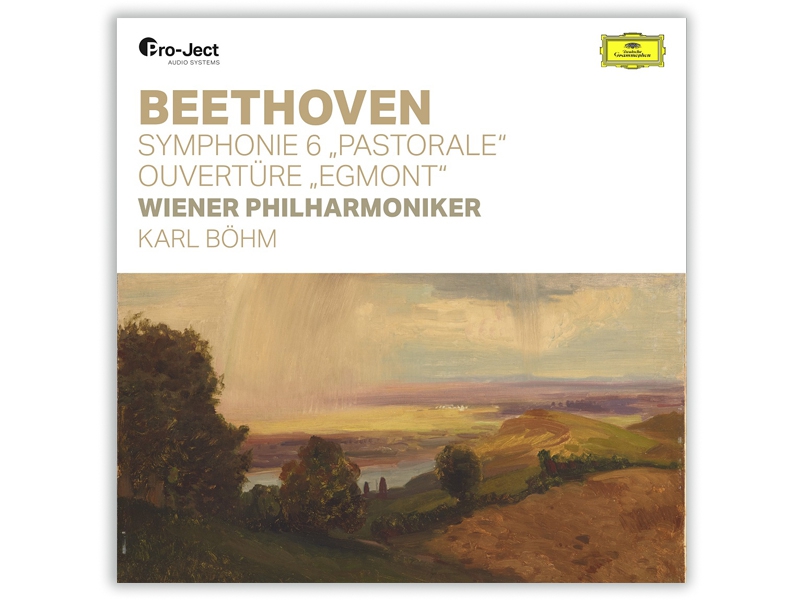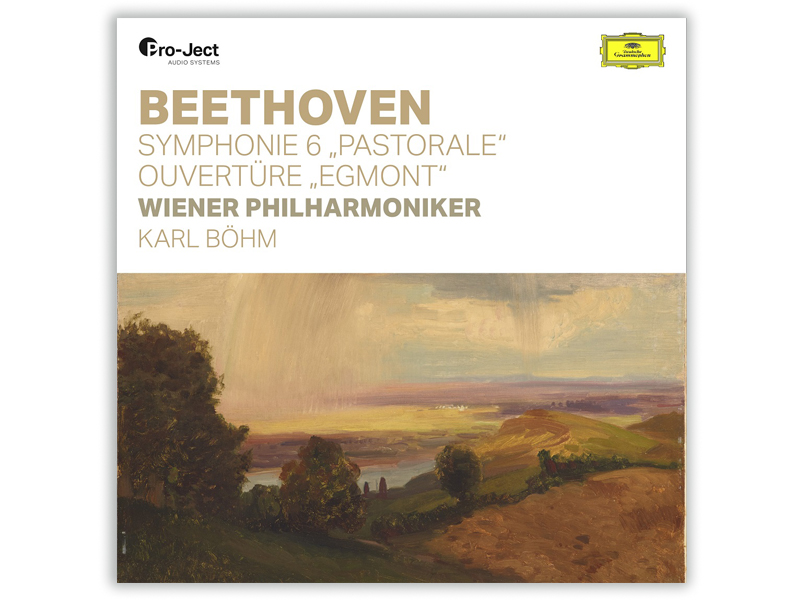
【嚴選黑膠唱片】Wiener Philharmoniker & Karl Böhm – Ludwig Van Beethoven
售價:1,600

Wiener Philharmoniker & Karl Böhm – Ludwig Van Beethoven
Remastered with care and love from the original master tape by Georg Burdicek
This record was produced in cooperation with Pro-Ject Audio Systems to reproduce the original music and sound experience of this famous concert in the Golden Hall at the Wiener Musikverein. Pressed on 180g premium-quality vinyl in highest precision by Pallas Germany.
In 1803 Beethoven jotted down in his notebook: “Babbling brooks, andante molt[o], the larger the brook the deeper the tone” and wrote out initial sketches for the dance rhythm of the third movement. Five years later he labelled the first three movement as scenes: “Scene: Arrival in the countryside [and] effect on the mood”, “Scene by the brook”, and “Scene: Festive gathering”, to which he added “Even without descriptions the whole will be heard more as expression than as tone-painting”. In the end he prefixed the symphony with the words “More expression of feeling than painting”. Though the symphony was inspired by impressions of nature (Beethoven called it “Pastoral Symphony, or Recollection of Country Life”), this F major composition is not intent on describing natural events. Rather, it was the idea of nature itself that he poured into the form of the symphony, giving it five instead of the customary four movements. Thematically, the work is basically constructed of triads. The opening of the first movement already states the formative material of the following Allegro, which owes its characteristic colour not least of all to sustained pitches suggesting bagpipes and hurdy-gurdy. The “Scene by the brook”, with its onomatopoeic allusions to birdsong, is conceived as an expanded rondo. Whether or not the cry of the cuckoo struck a special chord with Gustav Mahler, just such a cry is found in the opening of his First Symphony.
The third movement, which substitutes for a scherzo, draws its character from the German dance known as a Deutscher. It is a gruff and assertive Allegro that leads directly to the symphony’s dramatic climax: a musical thunderstorm. Here thunderclaps are depicted by 16th-note quintuplets in the cellos and double basses, and raindrops by a flashing four-note figure in the violins. The finale follows without a break, leading once again to the tranquil atmosphere of the first movement. That Beethoven should return to the rondo idea of this movement in his late String Quartet op. 132 has to do with the similarity of their subjects: in the finale of the “Pastoral” the shepherds show their gratitude that the storm has subsided, whereas in the string quartet a man previously afflicted with a severe illness offers thanks to God for his recovery.
Karl Böhm, who was born in Graz in 1894 and died in Salzburg in 1981, occupies a special place in the history of the Vienna Philharmonic. In 1967 this doctor of jurisprudence became the first person to whom the orchestra awarded the title “honorary conductor” – a distinction that has since then been accorded only once more in the orchestra’s history, namely, to Herbert von Karajan in 1980. Just how warmly Böhm felt toward the orchestra is evident in the words that he spoke at his last appearance with the Philharmonic. It was the final recording session for a film version of Elektra by Richard Strauss, who numbered Böhm among his favourite conductors: “I’ve loved the orchestra like a human being ever since I heard it for the first time, standing at the back of the stalls in the Musikverein, and ever since I first conducted Tristan at the State Opera.”
It was the success of this performance of Tristan und Isolde at the Vienna Opera (which Böhm served as director in 1943-45 and again in 1954-56) that led to his début concert with the Vienna Philharmonic in April 1933. His last concert was given in Japan in 1980. If we add to this his 667 appearances at the Vienna State Opera, Karl Böhm, “Austria’s General Music Director”, stood at the helm of the Vienna Philharmonic 1430 times. This figure does not even include the sessions for the many recordings he made with the orchestra during the 48 years of their collaboration. Among them is his rousingly acclaimed complete recording of the Beethoven symphonies from the early 1970s, along with several overtures, including Egmont, composed in 1810 for a Vienna performance of Goethe’s like-named tragedy. All of them bear eloquent witness to a musicianly ideal noted for precision and naturalness of expression, and provide documentary evidence of Böhm’s flawless sense of tempo.
Vienna Philharmonic Orchestra
Conductor: Karl Böhm
Ludwig Van Beethoven
Symphony Nr. 6 F-Dur op. 68 „Pastorale“
1. Erwachen heiterer Empfindungen bei Ankunft auf dem Lande / Allegro ma non troppo
2. Szene am Bach / Andate molto mosso
3. Lustiges Zusammensein der Landleute / Allegro
4. Gewitter – Sturm / Allegro
5. Hirtengesang. Frohe und dankbare Gefühle nach dem Sturm / Allegretto
Overture „Egmont“ op. 84
1. Musik zu Goethes Tragödie
售後服務
*若您收到的商品有瑕疵或異常問題,請您於收到日算起的七日內與我們聯絡,我們將會立即為您辦理退換貨手續。
*本站上架販售之產品,因各廠牌顯示器及輸出色差關係,於螢幕所示產品圖與實物略有差異乃屬正常,購買時仍以
實體規格、尺寸、色澤為準。
*依照中華民國消費者保護法規,從商品到貨日起七日內為商品的猶豫期,若您認為您收到的商品有任何的瑕疵或損
壞,可要求退換貨,處理方式如下:
商品瑕疵 - 請先告知本公司後,由客服人員聯繫安排處理退換貨事宜。此退貨運費由本公司負擔。
無理由退貨 - 請先告知本公司後,由客服人員告知退貨流程及退貨寄回地址。此退貨運費由消費者自行支出。
*若客戶購物後欲更換商品,請於購物七日內保留原商品完整內外包裝及發票,否則恕不更換。欲更換之商品應以原
先購買之機型為準;欲更換之商品及內外包裝若因人為因素所造成損壞及污損,恕不更換。
*若您要辦理退貨,請先與我們連絡,待商品收回後,進行確認商品是否確實屬瑕疵或損壞品,確認無誤後,我們將
會立即辦理退款手續並將退款金額匯至您指定的銀行帳戶中,若您是採取線上刷卡的話,我們會將原刷卡金額辦理
刷退。
*七日商品猶豫期不包含福利品之販售,且購買者不得以外觀瑕疵問題要求退換貨,請務必確認後再購買。
發票寄送
*發票將以電子發票型式, 在付款完成、出貨後開立,並與商品一併提供。
*若是發票要存在載具, 請於訂單統一編號處填入載具編號。
*若三聯式發票需更改抬頭、統編,請註明正確抬頭、統編,於收到發票五日內,連同回郵及收到的發票掛號寄回
「106台北市大安區忠孝東路四段15號10樓 客服部 收」(以郵戳為憑),以利為您換開發票。
